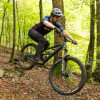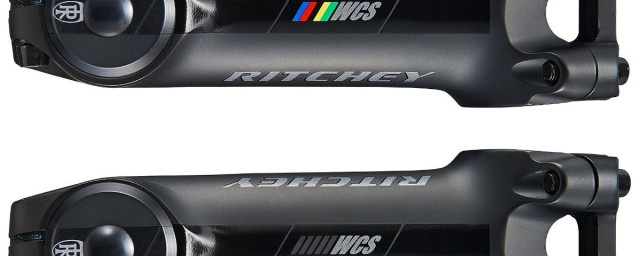Trickstuff is best known for its pricey but mega-extravagant braking systems that claim serious performance benefits. However, in an interesting curveball, the brand’s rotors and brake pads aren’t nearly as spendy, and they bring the feel and many of the performance of its braking systems to a much more achievable price and a wide range of brake types.
- Best mountain bike brakes 2025
- SRAM Code Ultimate Stealth brake review
- Disc brake pads explained: Organic vs sintered vs semi metallic
Trickstuff Power brake pad and Dachle Disc UL rotor - Technical details
Trickstuff has a rather comprehensive range of compounds but, on test, we’ve got the Power pad. They’re stated to perform during singletrack and bike park use and are built with a steel backing plate as standard, but there are also aluminium-backed pads with the same compound, if you’re looking for a bit more heat dissipation.
Trickstuff says it staves off fade while providing ‘impressive braking power’ in its standard guise. These pads come in 13 forms to fit SRAM, Shimano, Braking, Tektro TRP, FSA, Formula, Avid, Campagnolo, and Magura brakes. Of course, they fit Trickstuff models, too.
Trickstuff’s Dachle rotor is designed for heavy-duty use. Its hole pattern, the 15.5mm-wide friction surface, and 2.05mm thickness are said to thank for its ability to hold and dissipate heat without fading. That hole pattern is also responsible for clearing mud while preventing pad glaze.
The rotor is hardened stainless steel and comes in three diameters, 160, 180 and 203mm.
For this test, I ran the Power pads in a set of SRAM Code Bronze Stealth brakes with 203mm rotors on the Whyte E-Lyte Evo to push them a little harder with the weight of an e-MTB.
The 203mm Dachle rotor weighed 146g, a 46g weight saving compared to a 200mm SRAM Centreline rotor. The pads, including the spring, weigh around 26g.
Trickstuff Power brake pad and Dachle Disc UL rotor - Performance
Coming from Trickstuff, I had high expectations of its pads and rotors and certainly wasn’t disappointed. In terms of build quality, the brake pads don’t depart from the norm, and rightfully so, the rotors are built incredibly well. They’re tidy and clean and each cut is smooth. A really neat touch is that the outer edge of the rotor’s braking surface is rounded to help the rotor slide neatly between brake pads when reinstalling a wheel.
Although a relatively small part of a whole braking system, the Trickstuff pads and rotors made a big difference in terms of braking performance compared to the Centreline rotors and SRAM pads I was running before. Even up against the much improved HR2 rotors from SRAM, Trickstuff’s offering provides a very different level of feel and performance.
Braking power in general is greatly improved. Power delivery is more immediate and bitey but there’s more to play with. However, the Trickstuff combo doesn’t pile all its power in one go. There’s a serious increase in modulation and a softer feel at the brake lever. This might sound a little weird and it certainly feels odd to start with as the bite point is a little more vague, especially during the usual carpark test but out on the trail, the pair brings the power and control in spades.
Heat resistance is great, too. As always, I don’t ride particularly lengthy trails where serious fade will become apparent, but through steeper and more brake-intensive tracks, performance remained consistent.
Pad wear is more noticeable than other pads I’ve ridden for a similar amount of time. I was riding an e-MTB, however, so that certainly plays a role in the increased wear I found with the front brake pads. After the three to four-month test period, the rear pads are still good. Rotor wear shows nothing to be concerned about.
Trickstuff Power brake pad and Dachle Disc UL rotor - Verdict
The price of the Power brake pads is a step up compared to the likes of Galfer and other aftermarket brands with Galfer’s pads coming in under the £20 mark. So there’s certainly a premium being paid here, but this is where a good part of the feel at the brake lever is being provided.
With the rotor, there’s a saving to be made compared to SRAM’s excellent HS2 rotor. The Trickstuff Heavy Duty is priced at £50 in its 203mm variant whereas the HS2 comes in at £61. The same goes with Hope’s Floating Rotor at £60.
If you’re looking to reap some of the rewards of Trickstuff’s braking systems at a real fraction of the overall price, the Power brake pads and Dachle Disc UL rotors are an excellent place to start. Not only does the pair exhibit excellent build quality but also has an improvement in braking power and feel at the levers. While the rotors are cheaper than other key players in the market, the pads are pricier and with questions about the rate of wear being thrown into the mix, there’s certainly something to consider before dropping the cash. But that said, they’re well worth experimenting with.















Add comment